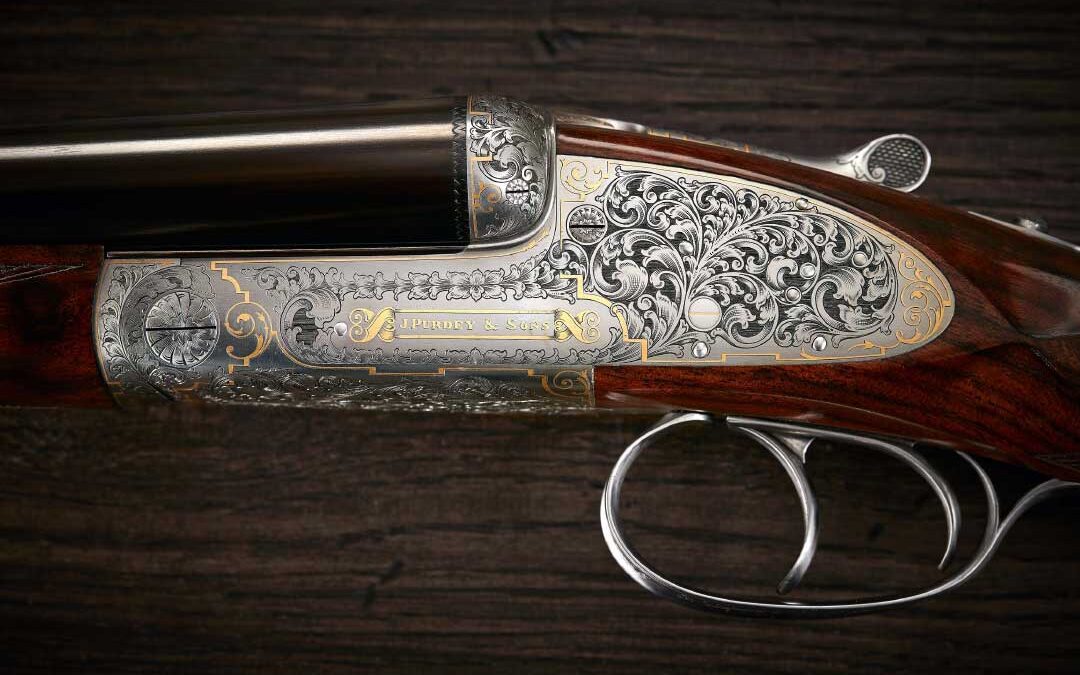Although there has been some debate about whether the eponymous gunmaking firm of James Purdey began operations in 1814 or 1816, 1814 is the date chosen by Purdey leadership to mark the firm’s beginnings, making 2014 the bicentennial of J. Purdey & Sons, or more simply—Purdey. Two hundred plus continuous years in the principal business on which it embarked is a remarkable accomplishment for any company, and particularly so for a firm whose principal product has always consisted primarily of handcrafted, limited production, very expensive luxury firearms. There were numerous events in the past 200 years, any one of which could easily have led to the firm’s demise.
In order to address the question “What does its third century hold for Purdey?” it is necessary to sketch a brief overview of Purdey’s first 200 years.
The years 1814 to 1816, the final years of the Napoleonic Wars, were a most inauspicious time to launch an enterprise involving personal firearms of the highest grade. Following Bonaparte’s final defeat in June 1815, Great Britain was exhausted and virtually bankrupt. War’s end brought massive unemployment with riots following as hundreds of thousands of soldiers and sailors were demobilized; the end of massive wartime spending and resulting deflation threw the British economy into deep recession. Wages dropped precipitously—where wages were to be had at all.
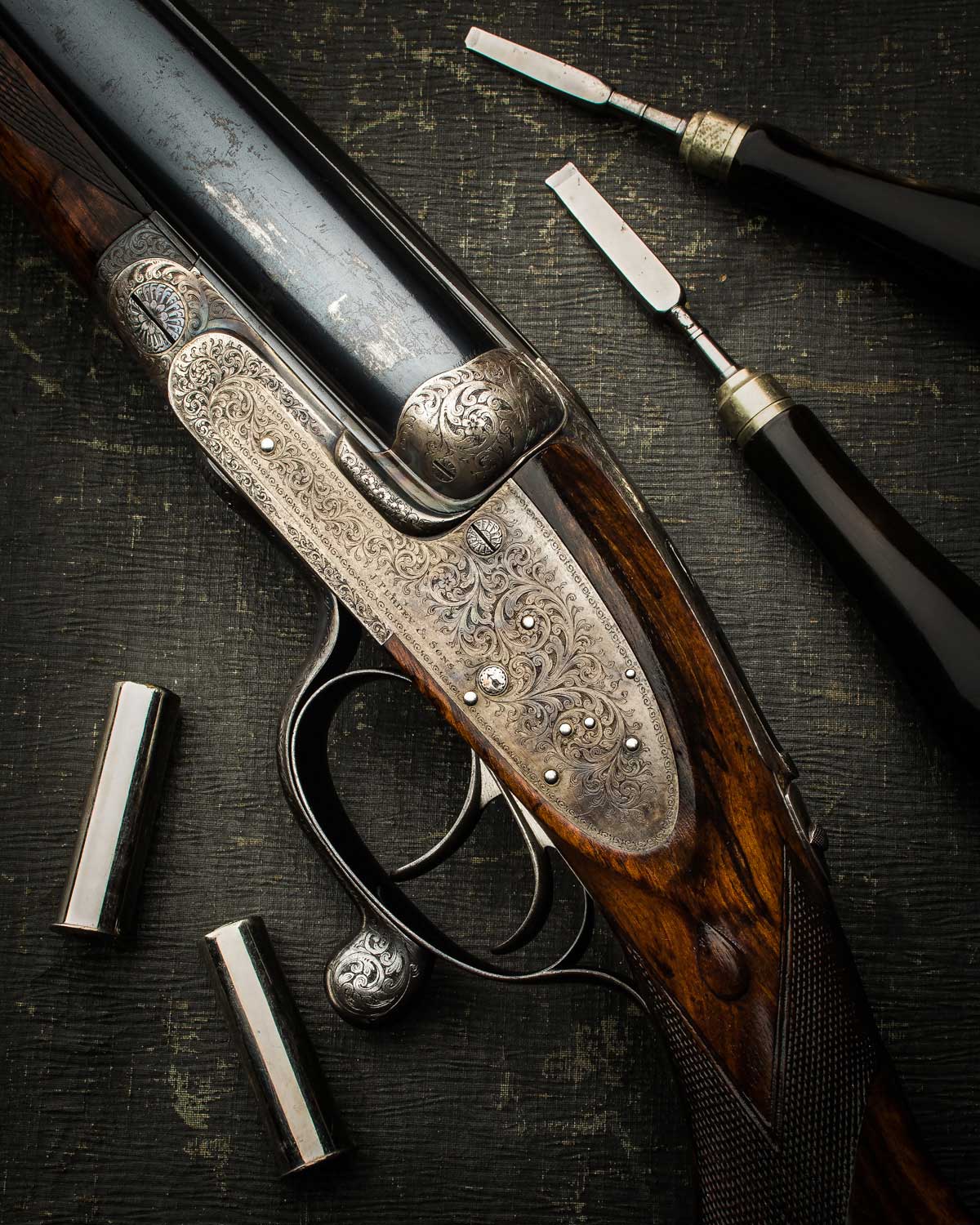
Nevertheless, the 30-year-old James Purdey was undeterred. He had served his apprenticeship in the gun trade under Thomas Keck Hutchinson then worked four years as a stocker for the preeminent British gunmaker of the era, Joseph Manton, before being hired away by the Reverend Alexander Forsyth first as a stocker and lock-filer and working his way up to foreman of Forsyth’s Patent Gun Company. Purdey’s relations with both Manton and Forsyth were amiable, and he could have progressed well with either employer, but Purdey believed in himself and his abilities and the products he could craft. Establishing his own company would allow him to make decisions at a far faster pace than working for someone else. So we find James Purdey firmly grounded in his craft, ensconced in his own premises at 4 Princes Street in the Leicester Fields Ward of the City of London.
The firm remained under the control of generations of the Purdey family, from James “the elder,” through his son, James “the younger,” through James the younger’s son, Athol, then Athol’s sons James Alexander (Jim) and Thomas Donald (Tom). However, by 1925 the firm’s finances were in a perilous state, with less than £4,000 in receipts over expenditures; the market for luxury firearms following the end of World War I was returning, but very slowly, and the British Government had enacted very heavy taxation to pay for the costs of the late war.
Jim Purdey, due to deteriorated health resulting from his World War I military service and a job that had taken him to the Tanganyika Territory, had never been actively involved with Purdey’s management. When Jim returned from Dar es Salaam with a new wife, the former Beatrice (Bee) Oliver, he had no job, nor prospects of one. Bee’s father, F.S. Oliver, offered to invest in Purdey if Jim could be appointed to the board of directors. Athol and Tom Purdey welcomed the critical investment, but the family-owned sole proprietorship would have to be converted to a limited company with preferred stock shares apportioned to the investors.
The first meeting of James Purdey & Sons Limited occurred on 5 October 1925, with Athol being appointed managing director, Tom being appointed manager and Jim being appointed a director, with the three Purdeys being required by the firm’s bylaws to devote all their time and energies to the service of the firm.
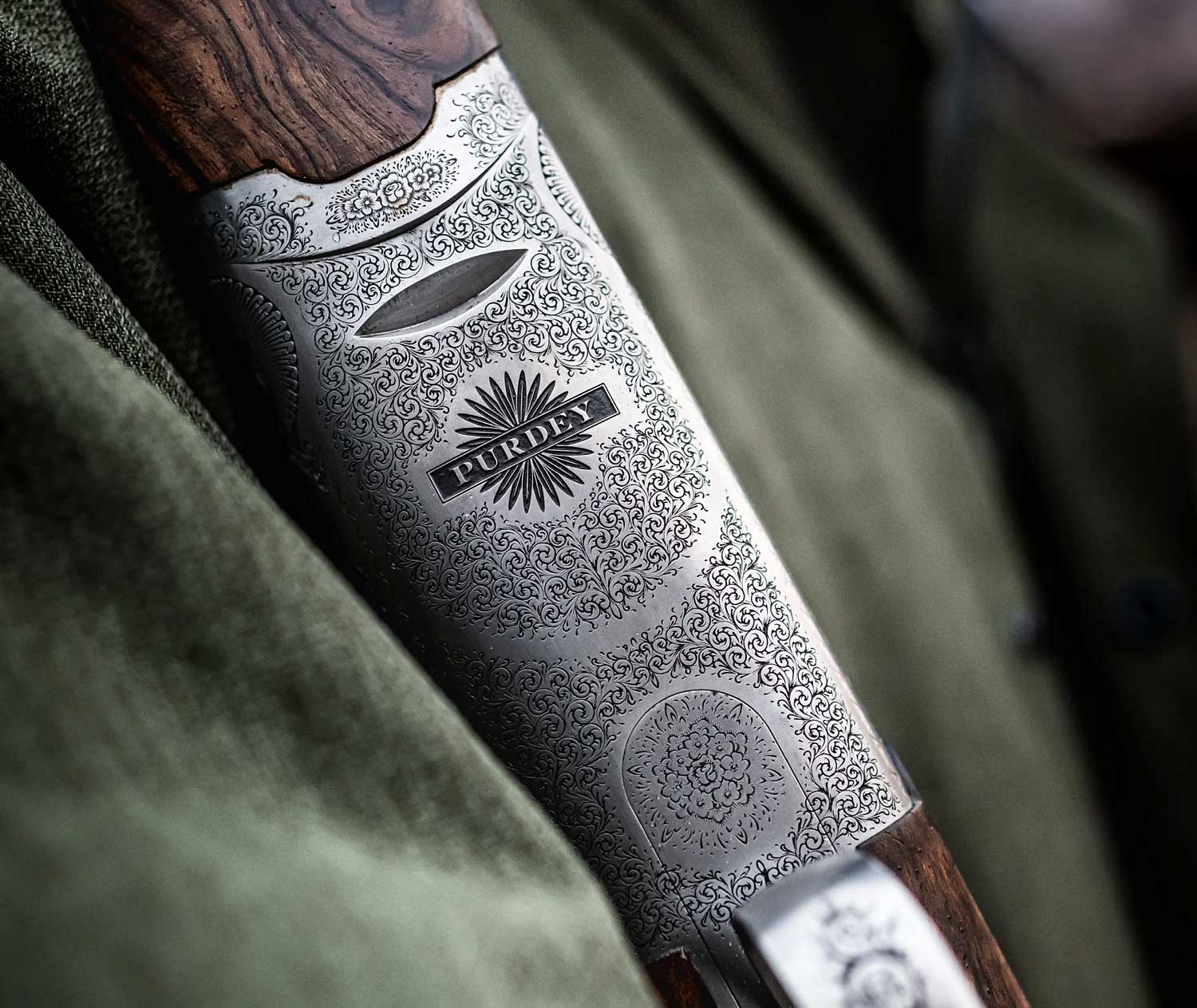
Unfortunately, Jim’s marriage to Bee did not last and, by 1929 at the onset of the Great Depression, the couple was divorced. The Olivers, wanting to protect their investments as preferred shareholders and stave off the very real threat of Purdey’s bankruptcy, were voted onto the board in April of 1932 and demanded both economy in operations and the repayment of personal expenses Athol, Jim and Tom had charged to the firm. However, since Bee was no longer married to Jim, as soon as the Olivers had recouped some of their investments, they sold their shares in James Purdey & Sons Limited and resigned from the Purdey board on 30 May 1935. The Olivers’ preferred shares were purchased by Sir Wyndham Portal and Major Godfrey Edward Miller-Mundy, who also advanced operating capital in the form of loans to James Purdey & Sons Limited.
The funds advanced by Sir Wyndham (subsequently Lord Portal of Laverstock) and Major Miller-Mundy saved Purdey from certain bankruptcy, so quite rightly they were displeased to learn that Tom Purdey, a life-long bachelor and celebrated bon vivant, continued charging his personal entertainment expenses to their firm! Tom was admonished on more than one occasion and an uneasy truce between the Purdeys and the preferred shareholders held for eight years until the strain of World War II when Tom Purdey’s incessant requests for a more generous distribution of retained earnings led to mutual bad feelings.
In November 1943, Lord Portal and Major Miller-Mundy happily sold their Purdey’s preferred shares to the firm of Cobbold and Company, owned by Ivan Cobbold, long a client of Purdey’s and ranked among Britain’s finest sportsmen. Ivan Cobbold was also a very close friend of Tom Purdey, and he quickly injected sufficient funds into Purdey to stave off the specter of bankruptcy. He also gave the firm’s officers and employees an immediate boost of confidence and enthusiasm by increasing salaries and paying small, but nevertheless very much appreciated, bonuses for the strains resulting from the unceasing requirements levied by the British military for the manufacture of precision tools, dies and molds needed for the Allied war effort.
Eight months after “rescuing” Purdey, on Sunday, 18 June 1944, Colonel Cobbold attended a packed worship service at the Royal Military Chapel, Wellington Barracks where, shortly after 11 a.m., a Nazi V-1 “buzz bomb” scored a direct hit on the Chapel. Colonel Cobbold was among the 141 military and civilian worshippers killed.
During the war years, Purdey received 136 gun orders, though none were produced. At the beginning of the war, the average price of a Purdey firearm was £150 to £155 (remember, these were 1939-40 prices!) but by 1945 labor costs escalated the basic price of a Purdey to £230. An economic adjustment in 1946 increased the basic price to £280. Some 40 percent of the war-time orders were cancelled. The financial solvency of Purdey was even more precarious in the aftermath of World War II than it had been following the end of World War I, and Tom and Jim Purdey initially concluded that the future of the firm lay in the manufacture of precision tools—Purdey’s primary source of revenue during the war years and in which Purdey had developed great expertise. The firearms line, albeit reluctantly, would have to be discontinued.
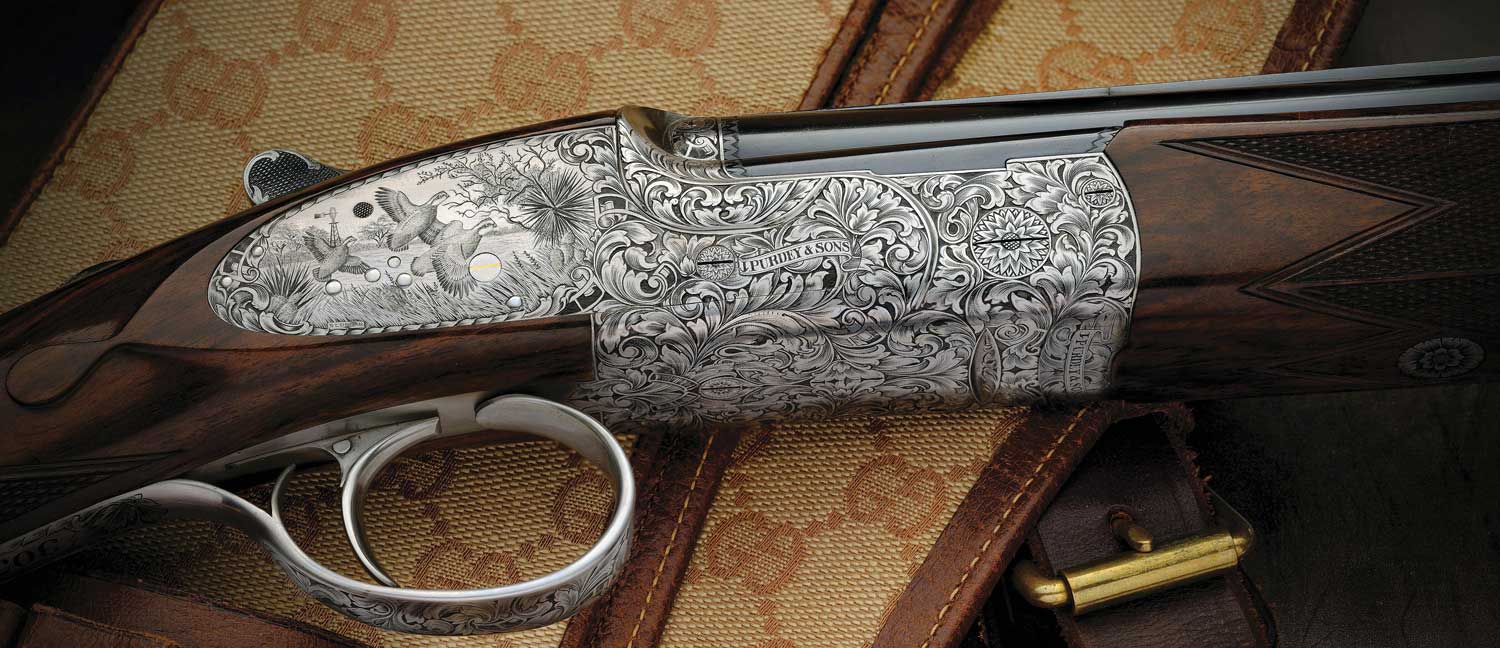
Fortuitously for Purdey, Parliamentary Undersecretary of State for Air, Hugh M. Seely First Baron Sherwood, purchased the Cobbold shares on 4 March 1946, and became the new owner of Purdey. Hugh Seely immediately brought aboard as a director his brother, Major Victor Seely, an old friend of Tom Purdey, the two having served together in the Royal Flying Corps. The Seely brothers astutely kept Tom as the chairman of Purdey.
More importantly, Hugh Seely vehemently disagreed that the future of Purdey lay with manufacturing precision tools, and believed wholeheartedly that Purdey should devote its efforts to what had earned Purdey its worldwide reputation for quality—building the very best of bespoke firearms—for there was only one Purdey!
In 1949 Hugh Seely made the momentous decision to offer a management position and then full ownership of his shares in Purdey to his nephew, The Honorable Richard Blackett Beaumont.
Richard Beaumont was the owner and director of Purdey for almost 40 years, successfully bringing the firm through vicissitudes such as dramatically increased labor costs, exorbitant interest rates, anemic economies and confiscatory taxes. Richard described the turbulence and perils besetting Purdey on every hand in his authoritative 1984 history, Purdey’s the Guns and the Family.
At a gathering of the Beaumont clan in 1977, Richard met a relative from a branch of the family that had gone out to Africa to take up land following World War I. Although they had never met, Richard saw great potential in his 23-year-old cousin, Nigel Canning Vane Beaumont, and unhesitatingly offered Nigel a job with Purdey as an apprentice. Following a severe heart attack, Richard sold Purdey in 1994 to Vendome PLC, which later became Compagnie Financière Richemont SA.
This sale was not a “spur of the moment” decision because Johann Peter Rupert, chairman of Richemont, who owned and frequently shot Purdey firearms, had long had an interest in James Purdey & Sons, and considered Purdey a “natural fit” to the other Richemont maisons.
Nigel Beaumont, who in the 15 years he worked for Purdey had progressed from the bench to managerial positions with the company, was the logical choice to succeed Richard Beaumont, ultimately becoming chairman of James Purdey & Sons. After working for the company for 35 years, satisfied with his accomplishments and the direction he had taken Purdey, Nigel took his well-earned retirement in early 2013.
Nigel’s permanent replacement was not selected until late 2014 when James Hayward Neale Horne accepted the invitation to become executive chairman of James Purdey & Sons. Horne did not come from the firearms manufacturing community. He initiated the highly successful “Guns-on-Pegs” web-based program wherein estates and syndicates with unfilled hunting days could market those days to individual or small parties. During his tenure as chairman, Horne oversaw the construction of and the move into an ultra-modern factory and workshops in west London and the acquisition of the Royal Berkshire Shooting Grounds.
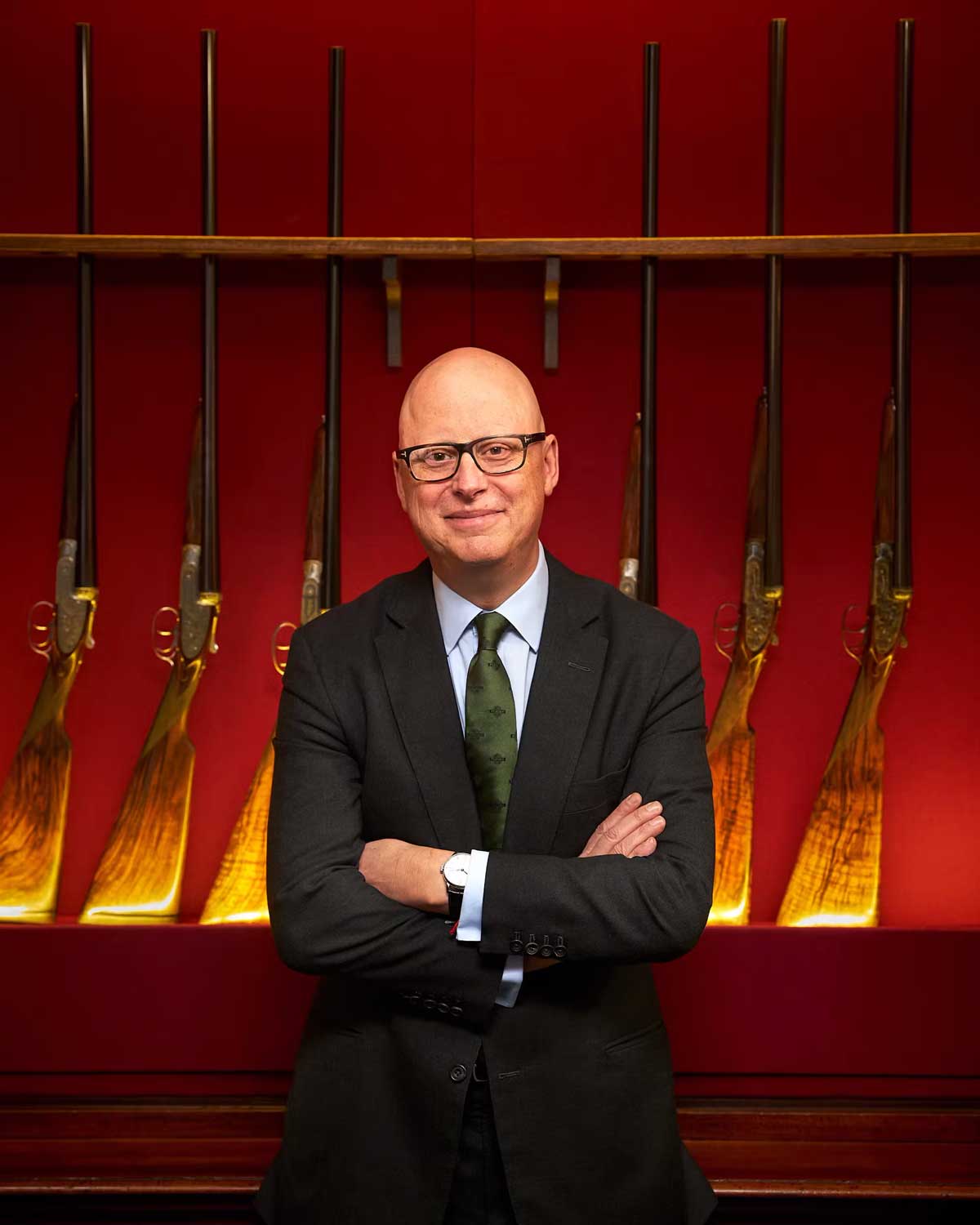
Dan Jago, James Purdey & Sons Chairman and Chief Executive.
In December of 2019, Horne was succeeded by Dan Jago, whose work experiences began as an officer in the Royal Navy and, immediately prior to his appointment as chairman of Purdey, was the chairman and CEO of the wine merchants Berry Brothers & Rudd.
Jago’s previous experiences focused on the responsibility of satisfying the customer—and understanding the necessity of quickly adapting to the customers’ changing requirements—while at the same time maintaining strict adherence to the company’s values and sustainability.
Purdey currently has a work force of some 80 employees with more than half actively engaged in the manufacture of firearms. While the annual production of firearms is company confidential, it is no breach of confidentiality to state that Purdey is now past gun number 31,000. The major, indeed the greatest, costs inherent in building a best quality firearm, is the cost of skilled labor—a craft that can only be learned through years of intensive apprenticeships. Purdey’s management has an aggressive program of finding people with the desire to make a future for themselves in the gunmaking trade, and then nurturing their innate abilities through the training programs that have proven to be the best avenues of skills development—apprenticeships.
The company is astute enough to take advantage of scholarships made available through various charitable organizations such as the Queen Elizabeth Scholarship Trust devoted to talent development and is an enlightened employer that can attract and retain the skilled craftspeople necessary to manufacture firearms to the company’s standards.
Most readers of Sporting Classics are well aware of the Purdey Bicentenary Trio (a 12-bore side-by-side Game Gun, a 470 Nitro Express Double Rifle and a 20-bore Damascus Over-and-Under Game Gun). Easily the most interesting of the Trio is the Damascus Game Gun—a stunning and brilliant tour de force of the gunmaker’s art. Indeed, Nigel Beaumont described this Damascus Game Gun as “perhaps the most exciting new product since I joined Purdey.”
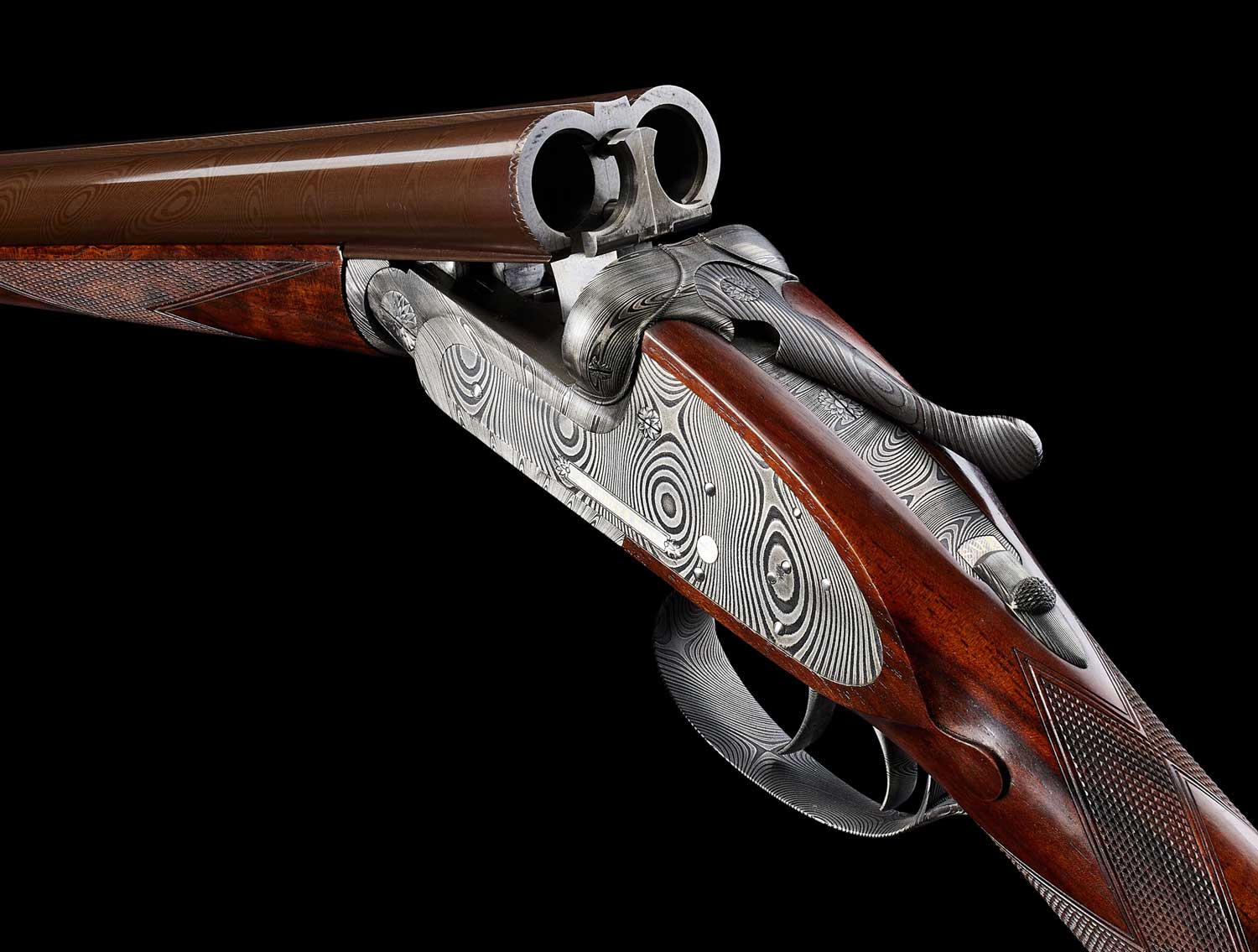
Given the historical understanding that Damascene steel is a method of fabricating pattern-welded metal forged by alternating layers of steel and iron into very strong and decorative patterns developed by blacksmiths many centuries ago, a brief discussion of the metal used in the making of a Purdey Damascus firearm is necessary. The metal used in fabricating the breech of the Damascus Game Gun is actually Damasteel, a Swedish metallurgical development in which multiple layers of steel powders are first vacuum-sealed and then welded together under high pressure in a hot isostatic press. The resulting steel possesses enormous strength and can be fabricated in true welded Damascus patterns.
Originally used to fabricate knife blades of great edge strength, outstanding corrosion resistance and wondrous, almost mystical beauty, several specialty gunmakers purchased billets of Damasteel with a view to fabricating shotgun barrels that would be, for all intents and purposes, “true” Damascus. However, if any gunmaker, with the exception of Purdey, has mastered the art of crafting receivers and barrels from Damasteel, that company’s identity is not known to your correspondent.
The Swedish company making Damasteel has made significant progress in increasing the batch size of pattern-welded steel from production runs of 1.5 kilograms (enough for a knife blade) to batches in excess of one ton. In every respect, steel produced by Damasteel is “true” Damascus, although manufactured by a more modern process that is quite different from the steels developed by ancient blacksmiths centuries earlier.
The problems that Purdey encountered and overcame in the fabrication of Purdey’s Damascus double guns is worthy of a story in itself. However, Purdey learned from its pioneering work and any discerning connoisseur may order a Damascus double gun from Purdey. The Damascus pattern is unique to each firearm and is displayed to best advantage by leaving the gun un-engraved but for the maker’s name in gold.
What other firearms may appear in Purdey’s portfolio? What about a bolt-action rifle? Actually, though not as widely known or publicized as its double guns, Purdey has made bolt-action rifles since the Mauser design was conceived and produced toward the end of the 19th century. This “new” Purdey bolt-action rifle will be built on a double square-bridge action made entirely in the Purdey shops and will be available in most cartridges currently available.
What about an innovative double gun design with a trigger-plate action? This distinctive design should be in production by the time you read this article.
Finally, what about an Over-and-Under double rifle chambered in a variety of cartridges, built on a receiver that will also accept shotgun barrels?
Purdey had experimented with having some finishing work, primarily assembly, outsourced in its “Sporter” line of non-sidelock Over-and-Under shotguns in order to provide a shotgun that would appeal to shooters who might not be interested in the classic sidelock design. While the arrangement was satisfactory from the perspective of a “Purdey-quality” shotgun, the building of a completely new factory ensures that all components of Purdey firearms are manufactured and assembled in-house.
Another “profit center” is the expansion of the line of clothing and shooting accessories made to Purdey’s specifications. Although Mrs. Robert Beaumont is rightly credited with introducing a full line of Purdey-branded clothing and shooting accessories, James Purdey the elder began selling shooting accessories such as leather goods very soon after he set up in his own premises. Some gunmakers, primarily on the continent, have marketed a line of clothing and some accoutrements with their companies’ logos simply to capitalize on their companies’ names. The quality—or lack thereof—of that branded clothing will quickly be obvious to the discerning shopper. Suffice it to say that any items sold with the Purdey cachet will be sourced from manufacturers fully vetted by Purdey and manufactured to Purdey’s exacting standards and will be a continuation of the “single-point shopping” dating from James Purdey the elder’s time.
Purdey will be exhibiting its wares at an increasing variety of venues as the company seeks to increase its sales and profitability. While the American market will probably continue receiving the most emphasis, expect to see more interest in Middle Eastern countries where the Italian gunmakers were quick to take advantage of the sub-standard products, delivery delays and uncertain pricing in early 1960s doldrums of the British gun trade to increase their market penetration.
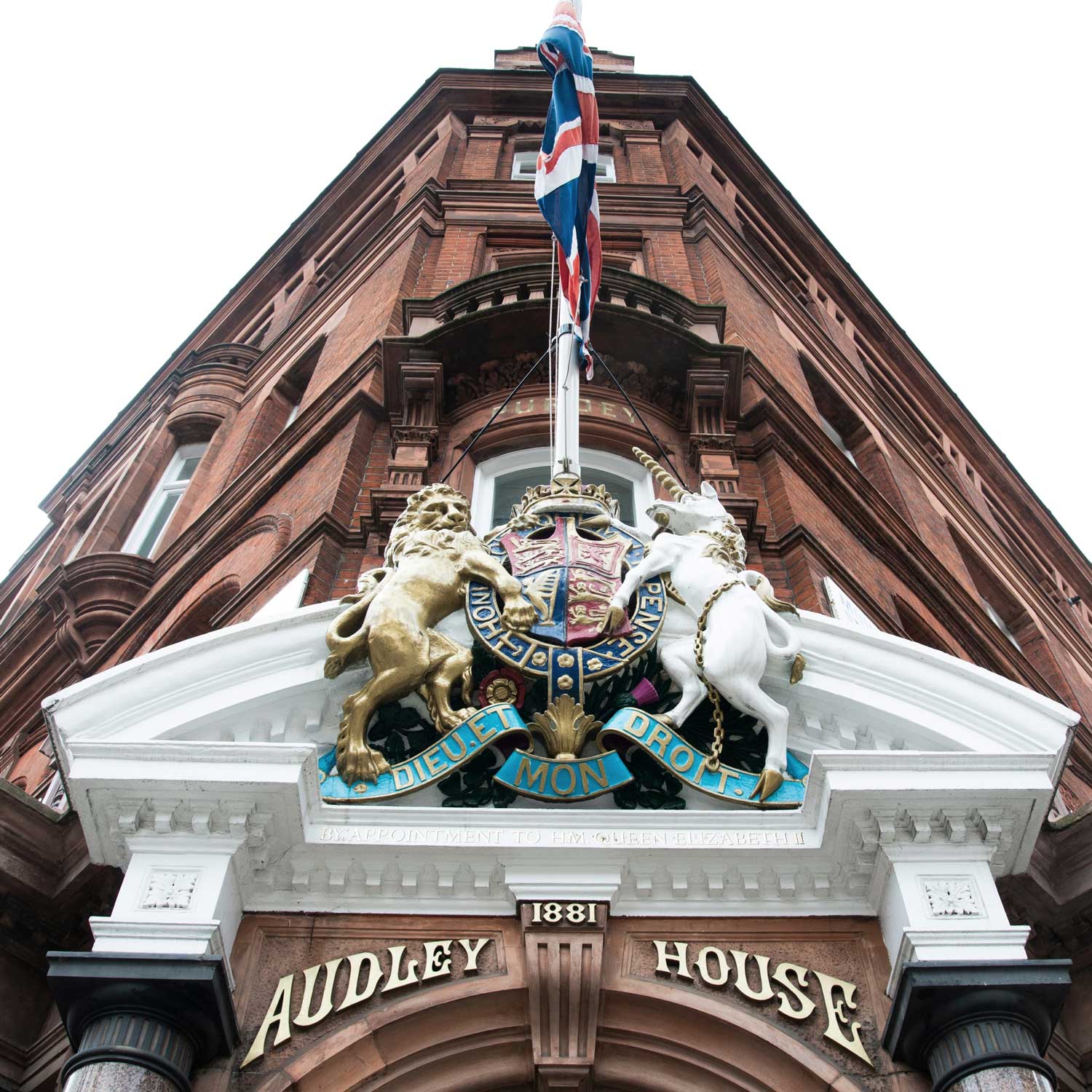
One market where Purdey has been particularly strong, Russia, will be moribund until political issues surrounding Russia’s unilateral annexation of the Crimea and interference in the internal affairs of other countries are resolved. I mention Russia only to emphasize the length to which Purdey will go to prove its loyalty to and provide top quality service to its clients. A Russian owner of a Purdey shotgun, believing his shotgun required certain adjustments, could have dispatched his shotgun to Purdey’s London premises for inspection and service—however, economic sanctions against Russia, to which the UK is a party, would have prevented Purdey from shipping the shotgun back. To resolve that conundrum, Purdey dispatched several craftsmen to Russia to perform any necessary adjustments to the owner’s shotgun.
Purchasing a firearm from Purdey is an experience, from initial discussions between the client and Purdey’s professional staff of the client’s shooting or hunting interests, physical measurements, shooting under professional observation with a try-gun and periodic visits to Purdey’s premises to observe the bespoke firearm as it advances through the various stages of its manufacture. Indeed, the client comes away from this experience wondering how Purdey can manufacture such a superior firearm so relatively inexpensively. The discerning client is not put off by the seemingly steep purchase price because the client understands that this initial cost will be amortized over the life of the Purdey firearm, and this initial cost is thus eminently reasonable.
Of course, given the uncertainties, vicissitudes and random anomalies of life and, as the imminent Danish Physicist Niels Bohr responded when asked to predict the influence of quantum physics on the future, “it is exceedingly difficult to make predictions, particularly about the future.” Thus, we cannot know as Purdey embarks on its third century of building the highest quality firearms whether this remarkable gunmaking firm will celebrate its tercentenary in the year 2114.
So long as Purdey adheres to thinking farther ahead than its competitors, and to the virtues of loyalty, integrity and common sense, Purdey’s grasps the theory of what causes what, and why Purdey is positioned for a much greater measure of success—now well into Purdey’s third century.

